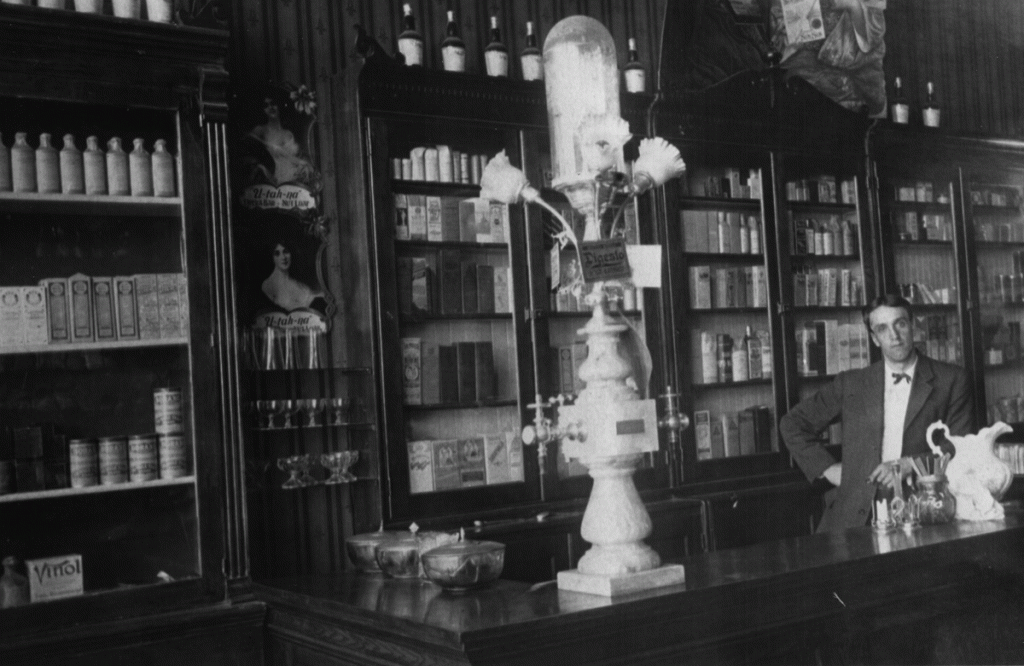We’ve all come across bizarre home remedies for treating various ailments, most of them popular a century ago or more. Typically they sound like something a snake oil salesman would try to pitch, and we laugh or roll our eyes at these quaint antidotes as we gratefully reach for the medicine cabinet. Some folk remedies might have actually worked though. And at the very least, they have interesting origin stories.
Mining posed the greatest health risks to Parkites back in the day, and miners’ wives relied on home remedies to aid their husbands’ constantly ailing lungs. In an oral history interview, Nan McPolin shared that miners’ wives would “mix brown sugar and tar together and give it to the miner to eat. This would supposedly clear the system.” Ingesting tar, candy coated or not, doesn’t sound like the best way to benefit one’s lungs. Tar made from pine, though, was used medicinally in Europe for centuries. In Finland, people ate it or rubbed it in open wounds to battle infections because of its antimicrobial properties, and an infusion of pine tar was given to horses for chest congestion in traditional veterinary medicine.
There are some other possible origins of the tar-and-sugar treatment. A Native American whooping cough remedy requires boiling several herbs together until they’re the color and consistency of tar. The combination is then mixed with honey, baked, and eaten. More notoriously, opium, which was once readily available in Park City, also looks like tar in its solid form. Opium eaters usually mixed the drug with sugar to take the edge off, possibly giving rise to two of opium’s slang monikers, “brown sugar” and “tar.” Still, opium could’ve legitimately been used for respiratory problems. In addition to its pain-killing properties, it also contains codeine, a natural cough suppressant used in modern medicine.

Credit: Park City Historical Society and Museum, Thomas F. Hansen Collection
McPolin also said that many miners’ wives would “boil rice and then use the hot water for clarifying the system.” It also “helped relieve the pain and soreness of [miners’] lungs and chests.” Miners’ wives might’ve learned about the many health benefits of rice and rice water from Chinese immigrants living in Park City. Rice water is simply made by cooking rice with excess water and then straining the rice when it’s done. The resulting broth is extremely nutrient rich. A variation on rice water is a simple rice porridge common in East Asian cultures called congee. Eating congee with other added ingredients including certain fruits, meats, or vegetables targets specific health problems, and congee made with pine nuts is especially beneficial to the heart and lungs.
Most of us are probably fine with accessing codeine at the pharmacy rather than an opium den or needing to resort to cumbersome cures. Still, we have folk remedies and our ancestors’ knowledge of the natural world to thank for modern medicine, and can at least admire the ingenuity of historical treatments even if we never have to use them ourselves.